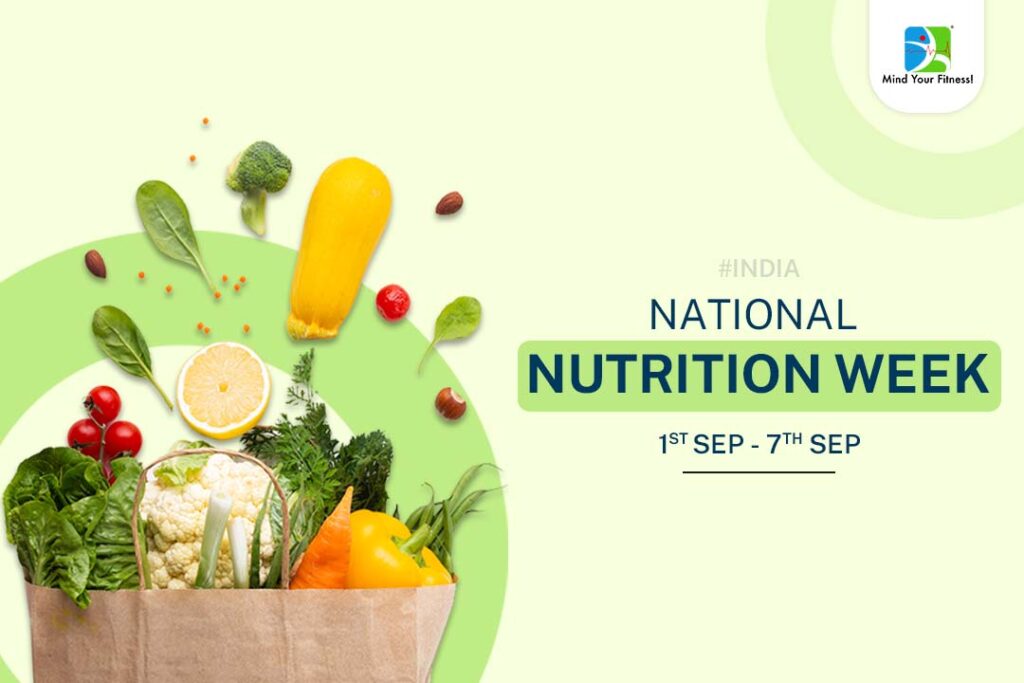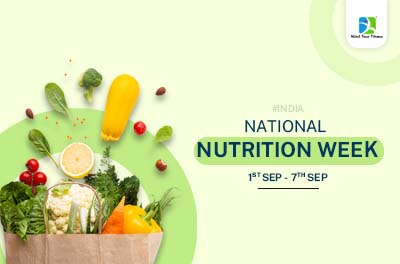
In India, the National Nutrition Week is observed every year from September 1 to September 7.
The day was launched by Ministry of Women and Child Development’s Food and Nutrition Board in 1982 to raise awareness on the importance of nutrition for human body. The need for spreading awareness of nutrition arose because a large population of India especially children and women do not get adequate food supply due to poverty, illiteracy and a lack of awareness.
Since then the Indian government has successfully launched various schemes and programs like Poshan Abhiyan for elimination of malnutrition.
It is a known fact that PREVENTION IS CHEAPER THAN CURE. This 7 day long event is celebrated to create awareness about healthy eating specially amongst the vulnerable sections of society.
Statistics in Indian scenario:
Anaemia (pregnant women and children):
The NFHS-5 findings reveal that the prevalence of anaemia has increased among children, women of all age groups including pregnant women, and men. This increase in prevalence was observed in almost all the states barring a few exceptions.
At the national level, the findings of the NFHS-5 from 2019-21, reveal that there has been an increase in the prevalence of anaemia among women and children compared to the previous NFHS-4 survey that was conducted in 2015-16, about 4 years ago.
The increase in anaemia among pregnant women is by 1.8 percentage points, among all women in the reproductive age is 3.9 percentage points, and among adolescent women by 5 percentage points.
Among children, the increase is the highest of 8.5 percentage points and is now closer to the levels recorded in NFHS-3 from 2005-06 when the prevalence was 70%.
Vitamin A deficiency (VAD):
The Comprehensive National Nutrition Survey conducted during 2016–18, dataset for 0–5 years age shows the overall prevalence of VAD in India is 17.54%. Children who are exposed to longer duration of breastfeeding have lower prevalence of VAD and those in poorer economic sections are more vitamin A deficient compared to children in richer economic sections.
Vitamin D deficiency:
The prevalence of Vitamin D deficiency ranged from 40% to 99%, with most of the studies reporting a prevalence of 80%–90%. It was prevalent in all the age groups and high‑risk groups alike. With the consequences of Vitamin D deficiency, namely, autoimmune diseases, cardiovascular diseases, cancer, and tuberculosis being explored, we can imagine the burden it would cause in our country. Our Indian diet generally fails to satisfy the daily requirement of Vitamin D, which stresses on the need of consuming supplements and vitamin D fortified food products.
Protein energy malnutrition:
Protein energy malnutrition (PEM) is a major public health problem in India. Nearly half of all deaths in children under 5 are attributable to under-nutrition as it puts children at greater risk of dying from common infections, increases the frequency and severity of such infections, and delays recovery.
The 2021 edition of the UNICEF-WHO-World Bank Group Joint Malnutrition Estimates shows that stunting prevalence has been declining since the year 2000, more than one in five – 149.2 million children under 5 –were stunted in 2020, and 45.4 million suffered from wasting. Meanwhile, the number of children under 5 affected by overweight worldwide has increased from 33.3 million in 2000 to 38.9 million in 2020.
Culinary diversity is one of India’s treasures. There is no homogeneity of flavour between North and South or East and West but rather, a wealth of flavours that is simply staggering.
In fact all the states and union territories have their own typical cuisine which is a flavourful expression of the local ingredients, spices and cooking methods brought together as their heritage.
A balanced meal should have all the essential nutrients in the right amounts to meet individual requirements. Local, inexpensive ingredients can be used to enhance the overall nutritional quality of the meal thereby keeping malnutrition at bay.
Since carbohydrates are consumed in abundance in the Indian diet (grains, fruits, starchy vegetables like potatoes, sugar), following are some local recipes that are rich in good quality protein, iron, vitamin A, essential fatty acids and calcium.





